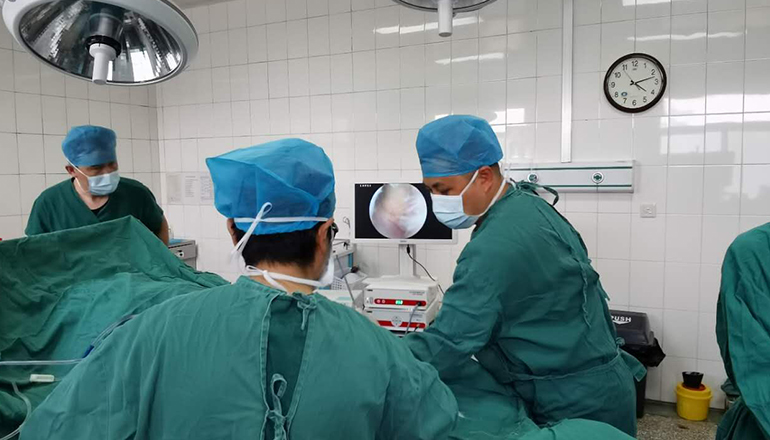- Shanghai, China
- [email protected]
- +86-21-58189111
Arthroscopic synovectomy is a minimally invasive surgical procedure that is performed to remove the synovial membrane from inside a joint. This procedure is commonly performed on patients with rheumatoid arthritis, a chronic inflammatory disorder that affects the joints and surrounding tissues.
The synovial membrane is a thin layer of tissue that lines the inside of joints and produces synovial fluid, which lubricates and nourishes the joint. In rheumatoid arthritis, the synovial membrane becomes inflamed and thickened, which can lead to joint pain, swelling, and stiffness. Over time, the inflamed synovium can cause joint damage and destruction.
Arthroscopic synovectomy is performed under general anesthesia. The surgeon makes several small incisions around the joint and inserts an arthroscope, which is a small camera that allows the surgeon to see inside the joint. A small instrument is then used to remove the inflamed synovium from the joint. The procedure usually takes less than an hour and most patients are able to go home the same day.
There are several advantages of arthroscopic synovectomy over traditional open surgery. Because the procedure is minimally invasive, it results in less pain, scarring, and blood loss. The recovery time is also much shorter than with open surgery. Most patients are able to return to normal activities within a few weeks after the procedure.
Arthroscopic synovectomy has been shown to be an effective treatment option for patients with rheumatoid arthritis. Studies have shown that the procedure can reduce joint pain and swelling, improve joint function, and slow down the progression of joint damage. In some cases, arthroscopic synovectomy can even delay or prevent the need for joint replacement surgery.

However, not all patients with rheumatoid arthritis are good candidates for arthroscopic synovectomy. The decision to proceed with this procedure should be made on a case-by-case basis after careful evaluation by an experienced rheumatologist or orthopedic surgeon. Patients with severe joint damage or other medical conditions may not be suitable candidates for the procedure.
In conclusion, arthroscopic synovectomy is a minimally invasive surgical procedure that is used to remove the inflamed synovium from inside a joint. The procedure is commonly performed on patients with rheumatoid arthritis and has been shown to be an effective treatment option for reducing joint pain and swelling, improving joint function, and slowing down the progression of joint damage. With proper evaluation and careful consideration, arthroscopic synovectomy can be an excellent option for patients suffering from rheumatoid arthritis.
It is important to note that arthroscopic synovectomy is not a cure for rheumatoid arthritis. While it can provide significant relief from joint pain and swelling, the underlying disease process will still continue. Patients will need to continue with their rheumatoid arthritis medication and management plan to prevent further joint damage.
As with any surgical procedure, there are risks associated with arthroscopic synovectomy. These can include infection, bleeding, damage to surrounding tissues, and the possibility of the procedure not achieving the desired results. Patients should discuss the risks and benefits of the procedure with their surgeon before making a decision.
In summary, arthroscopic synovectomy is a safe and effective surgical procedure for removing the inflamed synovium from inside a joint. It is commonly used to treat patients with rheumatoid arthritis and can provide significant relief from joint pain and swelling. While it is not a cure for rheumatoid arthritis, it can slow down the progression of joint damage and delay the need for joint replacement surgery. With proper evaluation and careful consideration, arthroscopic synovectomy can be an excellent option for patients with rheumatoid arthritis who have not responded well to other treatment options.
Leave a Comments